Navigating Industry Trends: The Role of HPMC in Advanced Detergent Formulations
The global liquid detergent market is undergoing a significant transformation, driven by consumer demand for concentrated, eco-friendly, and high-performance products. In this evolving landscape, formulators are increasingly seeking advanced rheology modifiers and water-binding agents that can deliver superior product stability, optimized viscosity, and enhanced user experience, particularly in alcohol-based systems. Alcohol-based liquid detergents, including hand sanitizers, surface cleaners, and specialized industrial degreasers, present unique formulation challenges due to their solvent properties and the need for robust viscosity control without compromising clarity or efficacy.
Hydroxylpropyl Methylcellulose (HPMC) emerges as a critical solution, offering exceptional capabilities in thickening, stabilization, and film formation. Its non-ionic nature and excellent compatibility with various surfactants and solvents make it an ideal candidate for complex formulations. This comprehensive guide delves into the technical aspects and application advantages of Increase Detergent Viscosity Water Binding Agent Hpmc For Alcohol Based Liquid Detergent, providing insights into its manufacturing, specifications, and diverse application scenarios.
Product Overview & Technical Specifications
Our featured product, Increase Detergent Viscosity Water Binding Agent Hpmc For Alcohol Based Liquid Detergent, is a premium grade of Hydroxypropyl Methylcellulose specifically engineered for the demanding requirements of alcohol-based liquid detergents. HPMC is a cellulose ether derived from natural cellulose, which undergoes a controlled chemical modification process involving alkalization and etherification with methyl chloride and propylene oxide. This results in a versatile polymer widely recognized for its thickening, suspending, binding, emulsifying, film-forming, stabilizing, and water-retaining properties.
For alcohol-based systems, the unique balance of hydroxypropyl and methoxy groups in HPMC allows for excellent solubility and compatibility, ensuring stable and clear formulations even at high alcohol concentrations. It functions as a highly effective rheology modifier, providing pseudoplastic flow characteristics crucial for product pumpability, pourability, and application consistency.
Key Technical Parameters
| Parameter | Specification (Typical) | Relevance to Detergents |
|---|---|---|
| Appearance | White to off-white fibrous or granular powder | Ensures clear and visually appealing final product. |
| Viscosity (2% Solution, 20°C, Brookfield RVT) | 50 - 200,000 mPa·s (adjustable grades) | Directly controls the thickness and flow properties of the detergent. |
| Moisture Content | ≤ 5% | Indicates product stability and prevents clumping. |
| Ash Content | ≤ 2% | Low ash content ensures purity and minimizes impact on formulation. |
| pH (1% Solution) | 6.0 - 8.0 | Neutral pH, compatible with most detergent ingredients. |
| Particle Size | >98% pass 80 mesh | Ensures rapid dissolution and homogeneous dispersion. |
| Degree of Substitution (MS/DS) | Optimized for alcohol compatibility | Critical for solubility and performance in high-alcohol environments. |
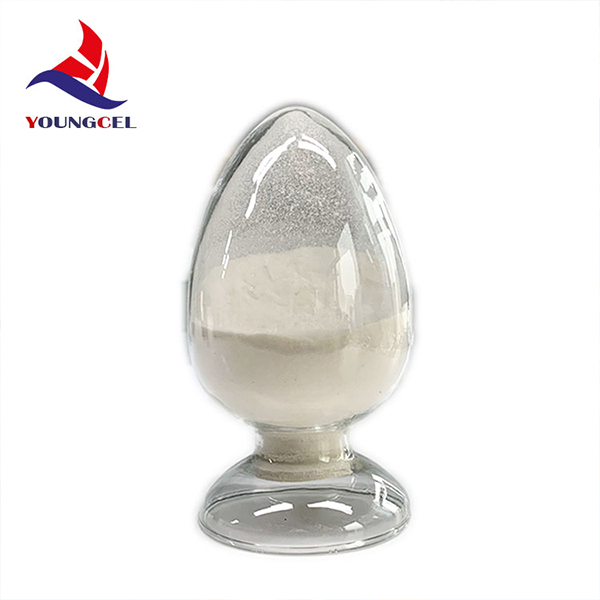
Manufacturing Process of HPMC
The production of HPMC, the core component of Increase Detergent Viscosity Water Binding Agent Hpmc For Alcohol Based Liquid Detergent, is a sophisticated chemical process that ensures consistent quality and performance. It begins with high-purity cellulose, typically derived from wood pulp or cotton linters. The overall process flow adheres to stringent quality control standards, including ISO 9001, to ensure product reliability and safety.
Process Flow Steps:
- Raw Material Preparation: High-grade cellulose is carefully selected and processed to achieve the desired purity and particle size.
- Alkalization: Cellulose is steeped in an alkaline solution (e.g., sodium hydroxide) to swell the cellulose fibers and convert them into alkali cellulose. This step activates the hydroxyl groups, making them reactive for the subsequent etherification.
- Etherification: The alkali cellulose is reacted with methyl chloride and propylene oxide under controlled temperature and pressure in a reactor. This introduces methoxy and hydroxypropyl groups onto the cellulose backbone, forming Hydroxypropyl Methylcellulose. The degree of substitution (number of methoxy and hydroxypropyl groups per anhydroglucose unit) is precisely controlled to achieve specific properties, such as viscosity and solubility in alcohol-water mixtures.
- Neutralization & Purification: After etherification, the crude HPMC is neutralized, and unwanted by-products (e.g., salts) are removed through a hot water washing process. This purification step is crucial for achieving high purity and low ash content, essential for detergent applications.
- Drying: The purified HPMC slurry is then dried using advanced drying technologies (e.g., spray drying or fluid bed drying) to reduce moisture content to the specified levels, preventing microbial growth and ensuring long-term stability.
- Grinding & Sieving: The dried HPMC is ground into a fine powder and then sieved to achieve a consistent particle size distribution. This optimizes dissolution rates and ensures homogeneous dispersion in liquid formulations.
- Quality Control & Packaging: Throughout the process, rigorous testing is conducted, including viscosity, moisture content, particle size, and purity analysis, adhering to international standards like ISO and ASTM. The finished product is then packaged in moisture-resistant bags, ready for distribution.
Target Industries & Advantages:
While HPMC finds extensive use across various sectors including construction (tile adhesives, renders), pharmaceuticals (binders, coatings), and personal care (shampoos, lotions), its specific advantages in the detergent industry are notable. HPMC contributes to improved formulation stability, extending the service life of detergent products by preventing phase separation and sedimentation. In alcohol-based detergents, it ensures clarity and consistent rheology, which are critical for consumer acceptance and product performance. Its ability to act as a water-binding agent also prevents excessive evaporation, maintaining product integrity over time. Furthermore, its chemical inertness means it doesn't react with other components, preserving the efficacy of active ingredients and preventing potential corrosion of packaging materials from unstable formulations.
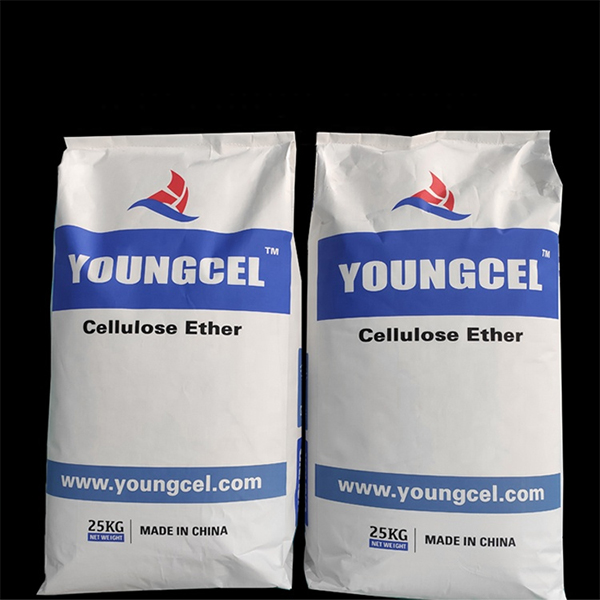
Application Scenarios for Alcohol-Based Liquid Detergents
The versatility of Increase Detergent Viscosity Water Binding Agent Hpmc For Alcohol Based Liquid Detergent makes it indispensable across a spectrum of alcohol-based cleaning products. Its ability to impart stable viscosity and improve textural properties is crucial for products where feel and performance are paramount.
- Hand Sanitizers and Gels: In alcohol-based hand sanitizers (typically 60-80% alcohol), HPMC provides the desired gel consistency, ensuring easy application without excessive dripping. It also enhances the tactile feel, reducing the sticky residue often associated with other thickeners.
- Alcohol-Based Surface Cleaners: For streak-free surface cleaners used on glass, mirrors, and hard surfaces, HPMC helps control the spray pattern and contact time, preventing rapid evaporation and allowing active cleaning agents to work effectively. It maintains a consistent film for uniform coverage.
- Industrial Degreasers: In heavy-duty industrial degreasers where high alcohol or solvent content is used for dissolving grease and oil, HPMC prevents settling of insoluble components and ensures uniform distribution, improving cleaning efficiency and stability during storage.
- Disinfectant Wipes Solutions: When used in the impregnating solutions for alcohol-based disinfectant wipes, HPMC ensures the consistent loading and even distribution of the liquid onto the wipe material, preventing separation and maintaining the efficacy of the disinfectant.
- Specialty Cleaners: For niche applications like electronic screen cleaners or optical lens cleaners, where alcohol is a primary solvent, HPMC provides controlled evaporation rates and non-residue forming properties, ensuring a clean finish.
In all these scenarios, HPMC's unique rheological profile contributes to a superior end-product, offering both functional benefits and an improved user experience. Real-world applications consistently demonstrate enhanced stability against phase separation and sedimentation, even under varying temperature conditions. Feedback from formulators highlights its ease of incorporation and reliability in achieving target viscosities in challenging alcohol-rich matrices.

Technical Advantages and Performance Benefits
The selection of Increase Detergent Viscosity Water Binding Agent Hpmc For Alcohol Based Liquid Detergent brings a multitude of technical and performance advantages to formulators, setting it apart from conventional thickening agents.
- Exceptional Viscosity Control: HPMC provides predictable and stable viscosity over a broad range of concentrations, critical for achieving desired product consistency. Its pseudoplastic rheology allows for easy pumping and pouring while maintaining high viscosity at rest.
- Excellent Alcohol Compatibility: Unlike many water-soluble polymers, HPMC is specifically engineered to perform optimally in high-alcohol environments, ensuring clarity and stability without cloudiness or precipitation.
- Effective Water Binding: As a potent water-binding agent, HPMC reduces the evaporation rate of water and other volatile components, thereby extending the shelf life of the product and preventing drying out in applications like wipes.
- Enhanced Suspension Properties: HPMC aids in suspending insoluble particles within the detergent matrix, preventing sedimentation and ensuring a uniform, consistent product appearance and performance throughout its lifecycle.
- Film-Forming Capabilities: Upon drying, HPMC can form a thin, transparent film, which can be advantageous in surface cleaners for protecting surfaces or in hand sanitizers for a smooth after-feel.
- pH Stability: HPMC maintains its performance across a wide pH range, making it suitable for diverse detergent formulations from slightly acidic to mildly alkaline.
- Non-Ionic Nature: Being non-ionic, HPMC exhibits broad compatibility with various ionic and non-ionic surfactants, electrolytes, and other additives commonly used in detergent formulations, reducing the risk of undesirable interactions.
- Improved Sensory Experience: In hand sanitizers and personal care detergents, HPMC contributes to a smoother, less sticky, and more pleasant tactile feel, enhancing user satisfaction.
Comparative Performance: HPMC vs. Other Thickeners
| Feature | HPMC | Carbomer (Acrylic Acid Polymer) | Xanthan Gum |
|---|---|---|---|
| Alcohol Compatibility (High %) | Excellent (Clear, stable) | Poor (Can precipitate/cloud) | Good (Can be stringy, slight haze) |
| Viscosity Control | Precise, pseudoplastic | High, pH-dependent, yield stress | High, pseudoplastic, thixotropic |
| Clarity of Solution | High clarity | Can be clear if neutralized properly | Slightly hazy |
| Feel/Sensory | Smooth, non-tacky | Can be tacky/sticky | Can be slimy/stringy |
| Dispersion/Dissolution | Good dispersion, dissolves easily | Requires careful neutralization | Prone to clumping if not dispersed well |
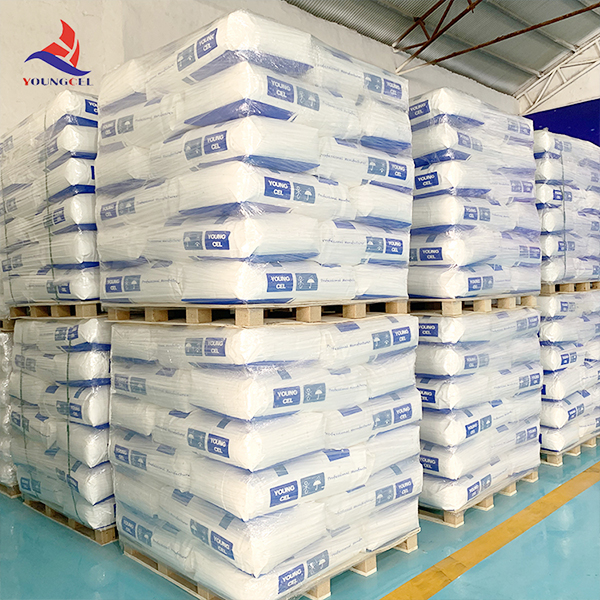
Vendor Comparison and Customized Solutions
Choosing the right supplier for Increase Detergent Viscosity Water Binding Agent Hpmc For Alcohol Based Liquid Detergent is as crucial as the product itself. Reputable vendors distinguish themselves through consistent product quality, technical support, and the ability to offer customized solutions tailored to specific formulation needs.
Key Considerations for Vendor Selection:
- Quality & Consistency: A top vendor will provide HPMC that consistently meets stated specifications, backed by robust quality control processes and certifications (e.g., ISO 9001, REACH compliance).
- Technical Expertise & Support: Access to experienced technical teams who can offer formulation guidance, troubleshooting, and in-depth product knowledge is invaluable.
- Customization Capabilities: The ability to modify viscosity grades, particle sizes, or degrees of substitution to achieve unique performance characteristics is a significant advantage for specialized applications.
- Supply Chain Reliability: A strong vendor ensures reliable supply, consistent lead times, and efficient logistics, preventing production delays.
- Regulatory Compliance: Products should meet relevant international regulatory standards (e.g., FDA, EFSA where applicable for specific uses).
Customized HPMC Solutions:
Recognizing that no two detergent formulations are identical, leading HPMC manufacturers offer customized solutions. This involves tailoring the polymer's specific characteristics to optimize performance in a given application. Customization options often include:
- Viscosity Grades: From low-viscosity grades for sprayable formulations to high-viscosity grades for thick gels, customized HPMC can provide the exact rheological profile required.
- Substitution Patterns: Adjusting the ratio of methyl and hydroxypropyl substitution influences solubility, gelation temperature, and compatibility with different solvents, including various alcohol types.
- Particle Size Distribution: Finer particle sizes can enhance dissolution rates, while coarser grades might be preferred for dust control in powder blends.
- Surface Treatment: Some HPMC grades may undergo surface treatment to improve dispersion in water or specific solvents, preventing lump formation.
Engaging with a vendor offering such flexibility ensures that your detergent formulations achieve optimal stability, desired texture, and consistent performance, thereby enhancing market competitiveness. Our company prides itself on extensive research and development capabilities, allowing us to partner with clients for bespoke HPMC solutions that address their most complex formulation challenges. We have over two decades of experience serving the specialty chemical industry, with numerous long-standing client relationships built on trust and consistent delivery.
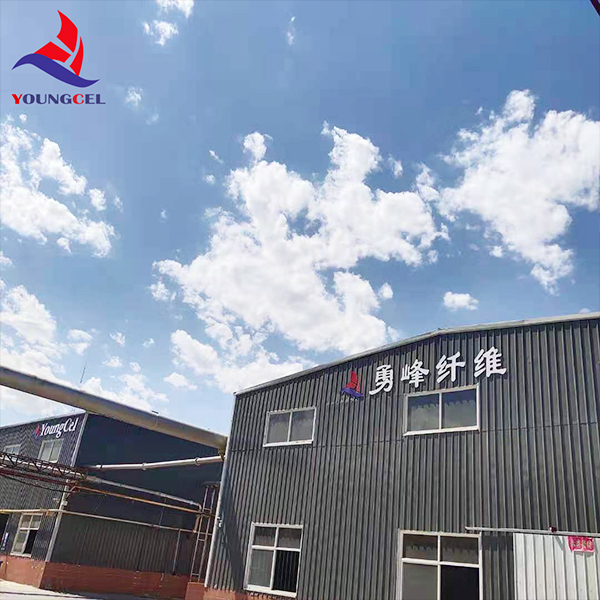
Application Case Studies
The practical benefits of Increase Detergent Viscosity Water Binding Agent Hpmc For Alcohol Based Liquid Detergent are best illustrated through real-world applications. These case studies highlight how HPMC delivers tangible improvements in product performance and market appeal.
Case Study 1: High-Alcohol Hand Sanitizer Gel
A leading personal care brand aimed to launch a premium hand sanitizer with 70% ethanol content, requiring a non-sticky, quick-drying gel texture. Initial attempts with acrylic thickeners resulted in a sticky feel and poor compatibility with the high alcohol concentration, leading to phase separation over time. Upon switching to a customized HPMC grade (HPMC-K100M, 100,000 mPa·s viscosity), the formulators achieved the desired pseudoplastic rheology, allowing for easy dispensing. The HPMC-based formulation exhibited excellent clarity, stability even after 6 months at 45°C, and a significantly improved non-tacky skin feel. Consumer feedback indicated a preference for the HPMC-based product due to its superior sensory profile and perceived quality.
Case Study 2: Industrial Glass Cleaner Concentrate
An industrial cleaning solutions provider sought to formulate a concentrated alcohol-based glass cleaner that could be diluted for professional use. The challenge was to maintain uniform suspension of a small percentage of polishing agents and ensure a stable, streak-free application when diluted. Using a low-viscosity HPMC grade (HPMC-E50, 50 mPa·s viscosity) at a low dosage (0.5%), the company successfully stabilized the polishing agent dispersion, preventing sedimentation during storage. The HPMC also provided a slight increase in solution adherence to vertical surfaces during spraying, allowing better dwell time for cleaning, while still evaporating cleanly without leaving streaks. This led to a 15% increase in product efficacy ratings by industrial users.
Case Study 3: Disinfectant Wipes Solution
A manufacturer of disposable disinfectant wipes faced issues with premature drying of their alcohol-based solution within the wipe packaging and inconsistent distribution of active ingredients. Integrating a medium-viscosity HPMC (HPMC-F400, 400 mPa·s viscosity) into their impregnating solution dramatically improved the water-binding capacity. This reduced the evaporation rate by 20% over a 12-month shelf life, ensuring the wipes remained moist and effective. Additionally, the HPMC helped create a more uniform liquid distribution across the non-woven material, leading to a more consistent dosage of disinfectant per wipe, a critical factor for FDA-compliant products. This modification resulted in reduced product returns due to drying and enhanced compliance.
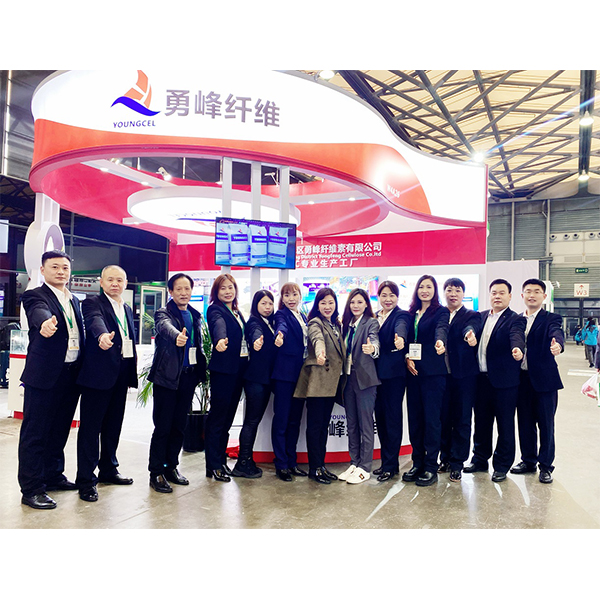
Frequently Asked Questions (FAQ)
Q1: What is the primary benefit of HPMC in alcohol-based liquid detergents?
A1: The primary benefit is its ability to effectively increase and stabilize viscosity in high-alcohol systems, provide excellent water retention, improve product clarity, and offer a non-tacky sensory profile, which is superior to many other thickeners in this specific application.
Q2: Is HPMC compatible with all types of alcohols and surfactants?
A2: HPMC exhibits excellent compatibility with common alcohols like ethanol and isopropanol. As a non-ionic polymer, it is also broadly compatible with most ionic and non-ionic surfactants used in detergent formulations, minimizing unwanted interactions.
Q3: How does HPMC impact the transparency of liquid detergents?
A3: Premium grades of HPMC, such as Increase Detergent Viscosity Water Binding Agent Hpmc For Alcohol Based Liquid Detergent, are designed to dissolve completely and form clear solutions, thereby maintaining or enhancing the transparency of liquid detergents, which is crucial for consumer appeal.
Q4: What are the typical dosage rates for HPMC in detergent applications?
A4: Dosage rates vary significantly depending on the desired viscosity, specific formulation, and other ingredients. Generally, HPMC is used at concentrations ranging from 0.1% to 2.0% (w/w). We recommend starting with a low concentration and gradually adjusting based on formulation trials.
Q5: What certifications does your HPMC product hold?
A5: Our HPMC products are manufactured under strict quality management systems and are typically certified to ISO 9001. Specific grades may also comply with other industry standards like Kosher, Halal, and certain pharmacopoeia or food-grade regulations, depending on their intended application. Please inquire for specific product certifications.
Lead Time, Warranty, and Customer Support
We are committed to providing exceptional service and support for our Increase Detergent Viscosity Water Binding Agent Hpmc For Alcohol Based Liquid Detergent product line.
- Lead Time & Fulfillment: Standard lead times for our HPMC products typically range from 2-4 weeks, depending on order volume and specific grade requirements. We maintain robust inventory levels and efficient logistics networks to ensure timely delivery. For urgent requirements or large-volume orders, please contact our sales team for tailored fulfillment solutions.
- Warranty Commitments: Our HPMC products come with a standard warranty guaranteeing they meet the published technical specifications and are free from manufacturing defects. In case of any deviation, we commit to prompt investigation and resolution, including product replacement or credit, in accordance with our terms and conditions.
- Customer Support & After-Sales Service: Our dedicated customer support team and technical experts are available to assist with product selection, formulation guidance, troubleshooting, and any post-purchase inquiries. We offer comprehensive after-sales support to ensure optimal performance and satisfaction with our HPMC solutions. Training sessions and technical workshops can also be arranged upon request to further empower your R&D and production teams.
We believe in building long-term partnerships through reliable products and unparalleled service, ensuring our clients achieve their formulation goals efficiently and effectively.
Conclusion
The demand for high-performing, stable, and consumer-friendly alcohol-based liquid detergents continues to grow. Increase Detergent Viscosity Water Binding Agent Hpmc For Alcohol Based Liquid Detergent stands out as a superior solution for formulators seeking to meet these evolving market needs. Its proven ability to control viscosity, enhance stability, and improve the sensory profile in challenging high-alcohol systems makes it an invaluable ingredient. By choosing a high-quality HPMC, manufacturers can ensure product differentiation, compliance with industry standards, and sustained consumer satisfaction.
References
- Thakkar, J. K. (2018). Cellulose Ethers: Synthesis, Properties, and Applications. Journal of Polymer Science, Part A: Polymer Chemistry.
- Guo, P., & Cao, Q. (2020). Rheological Properties of Hydroxypropyl Methylcellulose (HPMC) Solutions: Influence of Concentration and Temperature. Carbohydrate Polymers.
- European Commission. (2021). Efficacy of Alcohol-Based Hand Rubs for Disinfection. European Centre for Disease Prevention and Control.
- American Chemical Society. (2019). The Chemistry of Surfactants in Detergents. Chemical Reviews.
- Food and Drug Administration. (2020). Guidance for Industry: Nonprescription Rubbing Alcohol, Ethanol and Isopropyl Alcohol.
-
Understanding Methyl 2 Hydroxyethyl Cellulose: Uses, Benefits & Industry InsightsNewsNov.24,2025
-
Hydroxyethyl Methyl Cellulose HEMC: Industrial Uses, Benefits & Future TrendsNewsNov.23,2025
-
HEMC Cellulose: Versatile & Sustainable Industrial Polymer | YoungcelNewsNov.23,2025
-
Methyl Hydroxyethyl Cellulose: Versatile Building Block for Industry & SustainabilityNewsNov.23,2025
-
CAS 9032 42 2: Understanding Polyvinyl Alcohol's Impact on Industry & SustainabilityNewsNov.22,2025
-
Hydroxyethyl Methyl Cellulose: Versatile Solutions for Modern Industry and SustainabilityNewsNov.22,2025




